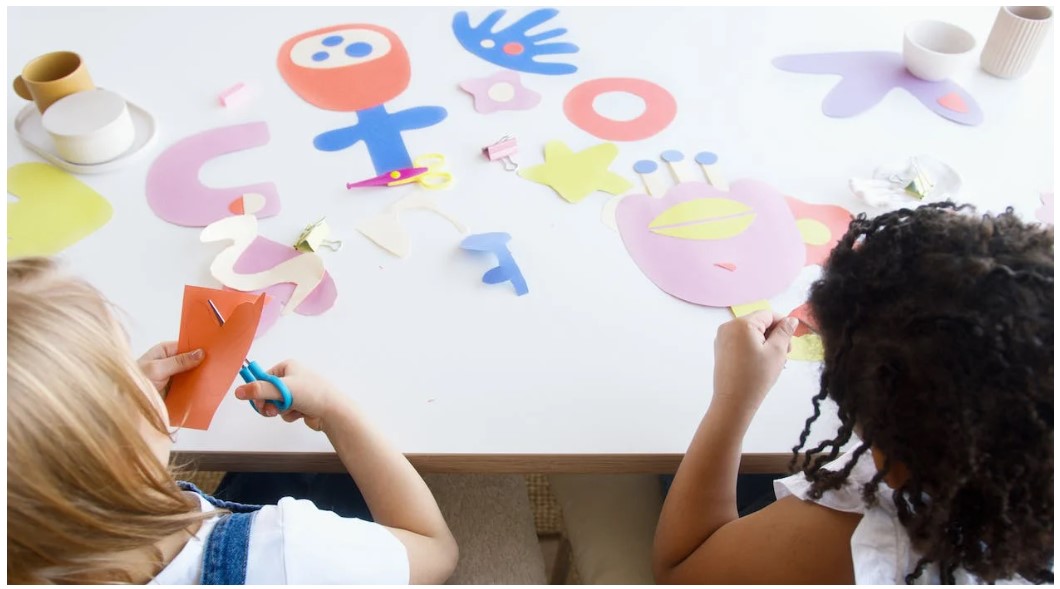Children are natural discoverers with strong imaginations. The thing is that they often need a bit of encouragement to express their creativity.
Creative thinking has long been a valued aptitude among people of all ages, but it’s sometimes hard to acquire since so many activities can distract them. Parents wanting to cultivate creativity in their kids wonder how they could make it work without overwhelming their little ones. The answer is simple: create a fertile environment where they can express their thoughts, grow, and flourish. And don’t listen to those saying it would be better to move out the way and let their creative spirit arise – because it won’t. Children need constant support to develop their talents, and it’s no wonder they’re not mature enough to make informed decisions regarding their future careers. This is where you, as a parent, come into play. However, ensure you maintain a balance between freedom and structure, as these must be carefully adapted to each child’s abilities and needs.
While you can’t guarantee that your child will become the next Michelangelo, you can give them a boost of confidence regarding their hidden talents. Besides, the more they explore, the more they will know what they’re meant for.
Without further ado, here are some practical ways to illuminate your kids’ imaginations:
Show examples to spark imagination
It might be intimidating for a child to get started, so whatever the project, ensure you provide them with a couple of samples. Also, be patient with your child, especially if they try something for the first time. Showing them project samples increases the chance for them to copy or mimic the examples, but don’t worry in this sense. In time, they’ll understand the importance of original work and endeavor to achieve it. Until then, keep showing them examples of paintings, drawings, sculptures, music, or any other artwork that can draw their attention. You can test their imaginative thinking by encouraging them to insert their personal touch. Ask them how they would change the examples and, if needed, encourage messing around with materials. Even an aimless activity like playing LEGO can become an extended project, so don’t be discouraged if your child is not interested in activities like painting or playing the piano.
Provide a broad range of materials
Kids are deeply influenced by the world around them, including materials and tools. Thus, it would be helpful to offer them a wide diversity of materials, traditional or not, to foster their creativity. Children are more prone to engage in imaginative activities if they have access to different materials like pens and markers, LEGO bricks, felt and fabric, or Scratch.
Whatever they’ll be interested in, don’t show disregard. It’s only normal for kids to like distinct types of making. And never-never underestimate their talent but keep encouraging them because children tend to get discouraged just as adults do when their work is undervalued.
Location can make a tangible difference
It’s nothing new under the sun that scenes can strongly influence the creative response of individuals. Numerous artists throughout the time drew inspiration from sceneries. For example, the famous Giovanni Antonio Canal (aka Canaletto) is inspired by the Grand Canal at the Church of La Salute in Venice. Landscape paintings continue to be very popular even in our times, with more and more artists turning to this oasis of inspiration when there’s no inspiration.
The same is with children: how could they make extraordinary things from the living room? So, consider taking them to various locations to stimulate their creative thinking and bring fresh air to something stuffy. It doesn’t necessarily have to be some fancy locations – parks, botanical gardens, the nearest tourist attraction, or a museum would be more than welcomed. You can also send your children to summer camp, as such locations are safe places for the little ones to practice social skills, meet new pen pals, and get engaged in various activities, either individually or in a group.
Help them pursue their passions
While it’s simple, as a parent, to persuade kids to pursue activities that you’re interested in or want them to be good at, it’s not always the best idea. In fact, it’s not at all a good idea. Thus, consider exposing children to as many activities as possible, but let them choose the one best for them. And, most importantly, don’t be disheartened if they aren’t skilled at sports or dancing – there is always something for everyone. With kids, you have to be patient, and this is a well-known fact, so don’t try to speed up their rhythm; otherwise, they will feel pressured to do things they might not want to do.
Don’t discount tech
Technology has proved our friend in many instances, so why wouldn’t you use it to your child’s benefit? Many apps allow kids to paint, draw, make music, or write, which are just as effective as paper or music instruments. We know there’s a common misconception regarding technology and its relationship with creativity, but as long as the little ones don’t spend too much screen time, we see no problem.
Contrary to most people’s expectations, playing video games can stimulate creative thinking in children, mainly if correctly chosen. VR games, for example, started to be used in healthcare as a means to enhance focus and problem-solving abilities. As previously stated, providing your children with the resources they need for creative expression is essential. In this case, it’s all about gadgets, apps, and games. So, make sure you choose suitable games and devices, as these can significantly contribute to flexing your kids’ creative muscles. Stimulating your little ones’ creativity doesn’t always have to do with enrolling them in classes or bringing them to some kinds of activities but also allowing them to be comfortable with technology.
Embrace everything your kid is interested in, and encourage them to pursue their dreams, as parental support is one of the most important factors when it comes to their future success.

